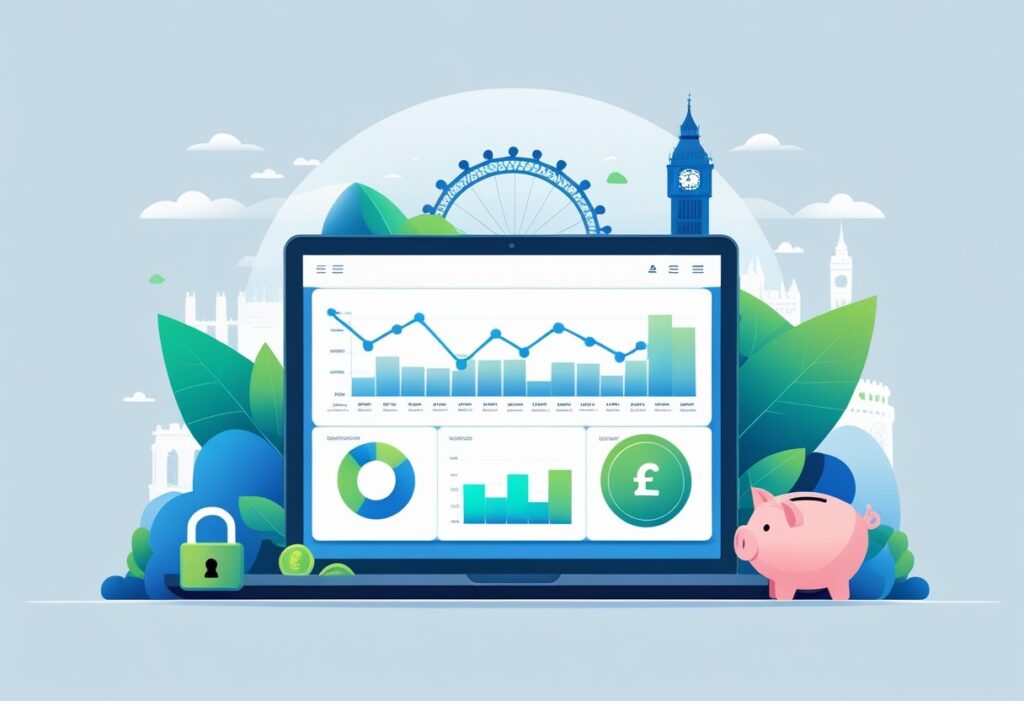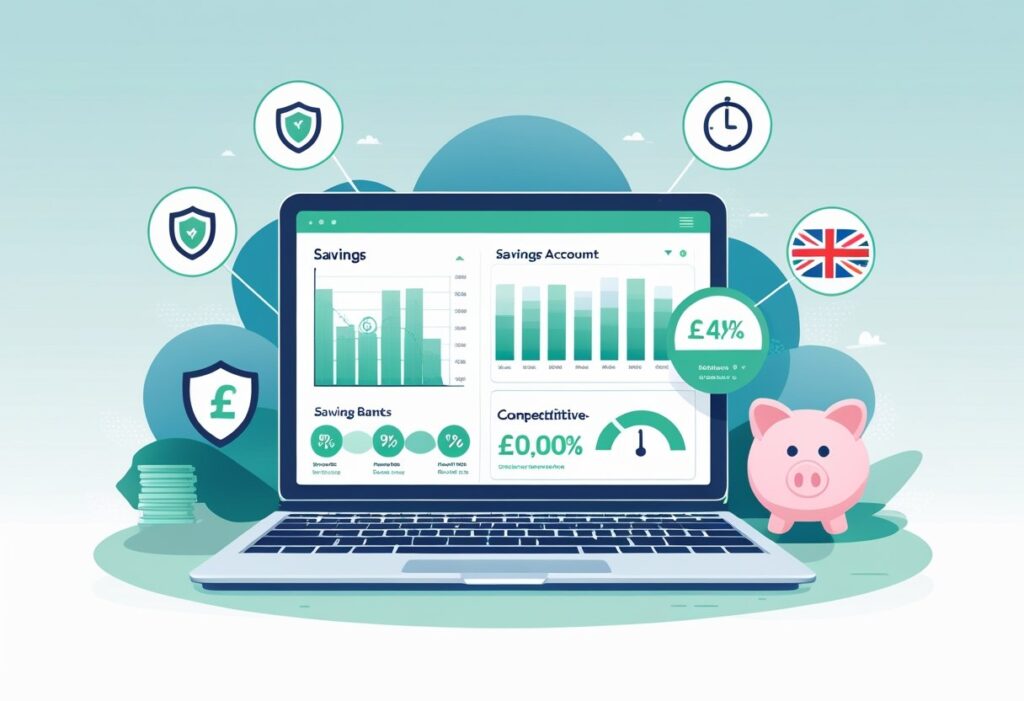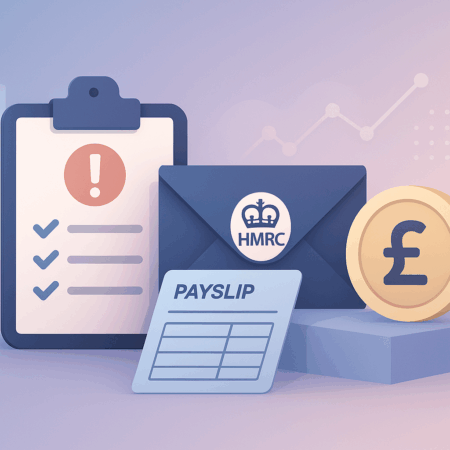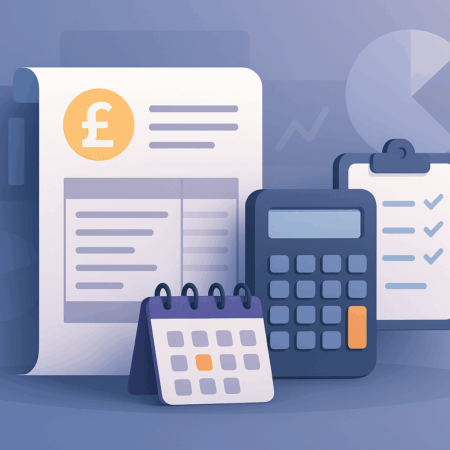Finding the best online savings account in the UK? It can feel overwhelming, honestly—there are just so many choices.
Each account comes with its own mix of interest rates, access rules, and bonus features. Some people want easy access, while others just want the highest rate possible.
Right now, the top accounts offer strong interest, simple access, and low fees, so you can actually keep more of your money.

Some accounts guarantee your returns with fixed rates for a set time. Others let you dip into your savings whenever, with no penalties.
What matters most? Decide if you want flexibility or if you’re happy to lock your money away for a better rate.
Online savings accounts are usually more convenient. They often beat high street banks when it comes to interest rates.
Banks and building societies keep changing their offers. It pays to keep an eye out for new rates.
If you compare accounts for interest, access, and security, you’ll find the right fit for your savings.
Key Takeways
- The best online savings accounts combine good interest rates with easy access and low fees.
- Different account types suit different needs, including fixed-rate and instant-access options.
- Regularly comparing rates helps savers get the best deal for their money.
What Is an Online Savings Account?

An online savings account is basically a bank account you manage through the internet. You get quick access to your money, and the interest rates are often better than what you’d get in a branch.
You handle everything—deposits, withdrawals, checking your balance—on your phone or computer. It’s all digital.
How Online Savings Accounts Work
You open and run these accounts through websites or mobile apps. No need to go to a branch or deal with paperwork.
Because banks save money by not running as many branches, they can offer better rates to you.
You can usually transfer money instantly between your savings and current accounts. Interest gets paid monthly or yearly, depending on the bank.
To open an account, you register online, prove your identity, and follow some security steps. Some accounts don’t need a minimum deposit, but others might.
Online vs Traditional Savings Accounts
The main difference? Online accounts cut out the branch visits, so you save time.
Traditional accounts might have lower rates because running branches costs more. Some folks still prefer them for the personal touch.
Online accounts often give you more flexible terms—like no limits on withdrawals. Traditional accounts might restrict you or charge fees if you take money out early.
Safety and Security in Digital Banking
UK online savings accounts are protected by the Financial Services Compensation Scheme (FSCS). If your bank goes under, you’re covered up to £85,000.
Banks use encryption and multi-factor authentication to keep your account safe. Still, you’ll want to use strong passwords and look out for scams.
Most reputable online banks are regulated by the Financial Conduct Authority (FCA). You can check a bank’s FSCS status before opening an account, just to be sure.
Key Features of the Best Online Savings Accounts

The best online savings accounts give you strong interest rates, simple access, and handy tools to help you grow your money.
These features make saving easier and more flexible, which is always a good thing.
Interest Rates and How They Work
Interest rates are what you earn on your savings. The top accounts offer rates between 4.5% and 5%, either fixed or variable.
Fixed rates stay the same for a set time, so you know what you’ll get. Variable rates can go up or down, depending on the market.
Interest usually gets paid monthly or yearly and is added to your balance, so you earn interest on your interest (that’s compound interest). High rates sometimes come with terms—easy-access accounts might pay a bit less, but you can take money out whenever.
Access and Flexibility Options
Some accounts let you withdraw money whenever you want, with no fees. These are called easy-access savings accounts.
They’re great if you need emergency cash or you’re saving for something soon. The trade-off? Sometimes the interest is a bit lower.
Other accounts ask you to give notice or only let you make a few withdrawals a year. If you don’t need quick access, you might get a better rate.
Savings Tools: Round-Ups, Pots, and Vaults
A lot of online savings platforms add tools to help you save without thinking about it. Round-ups take the spare change from your card purchases and move it straight into savings.
Savings pots or vaults let you split your money by goal—like holidays or rainy days. It makes budgeting easier and helps you track your progress.
These tools make it simpler to save regularly and see how you’re doing.
Types of Online Savings Accounts in the UK
There are a few main types of online savings accounts in the UK. Some are all about flexibility, others give you higher rates if you’re willing to lock your money away.
Knowing the differences can help you pick the right one for your needs.
Easy Access Savings Accounts
Easy access savings accounts let you get your money out whenever you like, with no penalties. The interest is usually a bit lower than fixed accounts, but you get total flexibility.
If you want to be able to grab your cash in an emergency, these are a solid choice. Some offer rates up to about 4.75%.
No withdrawal limits, no daily caps—just straightforward saving. A few banks even link these with high-interest current accounts for extra perks.
Fixed-Rate Savings Accounts and Bonds
Fixed-rate savings accounts and bonds want you to lock your money away for a set time, usually one to five years. In exchange, you get a higher, guaranteed rate.
Some fixed bonds pay up to 4.52% or more. You can’t touch your money until the term ends, unless you’re okay with a penalty.
Banks and building societies offer different terms, so you can pick what suits you. Interest might be paid out monthly or all at once at the end.
Notice Accounts
Notice accounts ask you to give a heads up—usually 30 to 120 days—before you can take money out. Because you’re planning ahead, the bank rewards you with a better rate than easy-access accounts.
These work well if you don’t need instant access but still want the option to get your money with a bit of notice. Rates can go above 4%, depending on how long the notice period is.
Pick a notice period that matches how much flexibility you want.
Regular Savings Accounts
Regular savings accounts make you put in a set amount every month, and you can’t usually take money out whenever you want. But the reward is a higher rate—sometimes over 4.9%.
These accounts help you build a savings habit and might require you to have a current account with the same bank. They’re great for people who want to save a little every month.
You’ll usually have a monthly deposit limit, often between £100 and £500. If you miss a payment or withdraw money, you might earn less interest.
Cash ISAs and Tax-Free Savings
Cash ISAs let you earn interest without paying tax, which is a big deal for UK savers. There are a few different types, and knowing the rules can help you make the most of your money.
Some ISAs are designed for long-term savings or even for kids—worth considering if you want to lock money away for a while.
Types of Cash ISAs
A Cash ISA is a savings account where you don’t pay tax on the interest, up to £20,000 a year. There are two main types: Easy Access Cash ISAs, which let you take money out whenever, and Fixed Rate ISAs, which lock your money for a set term in exchange for a higher rate.
Some banks also offer Regular Savings Cash ISAs that need a monthly deposit. If you want flexibility, go for easy access; if you want the best rate, fixed is the way to go.
All these ISAs give you tax-free interest, which can help your savings grow faster than a regular account.
Personal Savings Allowance Explained
The Personal Savings Allowance (PSA) lets basic-rate taxpayers earn up to £1,000 interest tax-free, and higher-rate taxpayers get £500. If you’re an additional-rate taxpayer, you don’t get an allowance.
Interest from a Cash ISA doesn’t count toward your PSA, since it’s always tax-free. That means you can stash up to £20,000 a year in an ISA and not worry about paying tax on the interest.
For bigger balances or higher incomes, using a Cash ISA helps you avoid tax on interest that would otherwise go over your PSA.
Lifetime ISAs and Junior ISAs
A Lifetime ISA (LISA) is for people aged 18 to 39 who want to save for their first home or retirement. The government adds a 25% bonus on up to £4,000 a year.
Your savings and the bonus grow tax-free. You can only take money out for your first home or after age 60—otherwise, you’ll pay a penalty.
Junior ISAs are for kids under 18. Parents or guardians can put in up to £9,000 a year (for 2025), and all the interest is tax-free.
The money stays locked in until the child turns 18, making it a solid way to build a nest egg for their future.
Top UK Providers for Online Savings Accounts
Some of the best online savings accounts in the UK come from providers offering strong rates and FSCS protection. Each bank has its own approach to access, interest, and customer service.
Finding the right one really depends on what you want from your savings.
Revolut
Revolut stands out for its slick app and flexible savings accounts, called “Vaults.” Its rates are competitive and get updated regularly.
You can set up multiple Vaults for different goals and round up card payments to save spare change. That’s pretty handy.
All accounts are FSCS-protected up to £85,000, so your money’s safe. Revolut gives you easy access to your cash, usually with no notice needed.
If you like managing everything from your phone, Revolut’s interface is hard to beat.
Virgin Money
Virgin Money offers a good mix of fixed and easy-access savings accounts with clear, competitive rates. Whether you want to lock your money away or keep it flexible, there’s usually an option.
Their accounts are covered by FSCS up to £85,000 per person. Virgin updates rates regularly to stay competitive, and the online account management is simple.
If you want a straightforward product from a big UK name, Virgin Money is a solid pick.
NatWest and First Direct
NatWest and First Direct both offer a range of online savings accounts, from fixed-rate bonds to instant access. FSCS covers your money up to £85,000.
First Direct is known for great customer service and easy online banking. NatWest’s digital access is good, but sometimes the instant-access rates are just a tad lower.
If you want strong service and the backing of a big bank, these are both worth a look.
Comparing and Choosing the Right Account for You
Picking the best online savings account comes down to a few things: how much you can deposit, whether you qualify for bonus rates, your savings goals, and how inflation might eat into your returns.
There’s no single answer—just the account that fits your own financial plans and comfort level.
Minimum and Maximum Deposit Requirements
Many online savings accounts set specific minimum and maximum deposit rules. The minimum deposit is just the smallest amount you need to open the account or start earning interest.
You might see minimums as low as £1, but sometimes they jump up to £1,000 or more. Maximum deposit limits, on the other hand, cap how much you can stash away while still earning the advertised interest rate.
Some fixed-rate bonds or easy-access accounts stop you at around £1 million, but others don’t bother with a cap. Always check these limits before you get too excited about a new account.
If you’re only saving a small amount, skip accounts with high minimums. If you’ve got a lot to put away, make sure you won’t lose out on interest because of a maximum deposit rule.
Introductory Bonus Rates and Terms
Some accounts dangle introductory or bonus interest rates to lure in new customers. These rates usually beat the standard ones, but only stick around for a short stretch—maybe three to twelve months.
Pay close attention to when the bonus ends and any sneaky conditions. After the intro period, the rate almost always drops to something lower.
You might also run into withdrawal restrictions or special deposit requirements. Definitely read the terms, so you don’t get caught off guard when your interest earnings change.
Saving for Different Goals: Short vs Long-Term
Your savings account choice can hinge on your goals. If you’re saving for something soon, like a vacation or an emergency fund, easy-access accounts with no penalties for withdrawals make sense.
Looking at long-term goals? Stuff like retirement or buying a home? Fixed-rate bonds or notice accounts usually pay more, but you’ll have to lock your money away for a while.
A lot of people juggle multiple accounts for different goals. It’s a practical way to balance easy access with better rates on the money you won’t need right away.
Inflation and Protecting Your Savings
Inflation eats away at your money’s value as time goes on. If your savings account pays less interest than the inflation rate, your money won’t stretch as far.
Try to pick accounts with interest rates that at least keep pace with inflation. Lately, that’s hovered around 3-5% in the UK.
It’s smart to review your accounts now and then, or even switch, to keep your savings growing. Some fixed-rate bonds can beat inflation, but you’ll usually have to give up easy access.
Don’t ignore inflation when you’re picking where to save. It’s a sneaky thief.
Alternatives to Traditional Savings Accounts
You don’t have to stick with the old-school savings accounts if you want something different or potentially better. There are current accounts with higher interest, options for kids and teens, and investment-focused accounts like Stocks and Shares ISAs.
Each of these comes with their own quirks and perks. Worth a look if you want to mix things up.
High-Interest Current Accounts
High-interest current accounts work like regular bank accounts but actually pay you interest on your balance. Usually, you’ll need to pay in a minimum amount each month, or maybe have your salary sent there.
Sometimes the rates are surprisingly good—maybe even better than some savings accounts. You get easy access to your cash, no awkward lock-in periods.
These are great if you want to earn interest without tying your hands. Some even throw in little extras, like cashback or free overdrafts.
Still, rates can jump around, so always check the fine print.
Children’s and Youth Savings Solutions
Children’s savings accounts are all about helping kids build good money habits early. Some, like those under the Saving Spaces scheme, let parents save for their kids and grab government bonuses on top.
These accounts usually have tax perks and fixed rates. For older kids and teens, youth accounts make managing money easier.
They tend to skip the fees and sometimes offer better interest to reward regular saving. It’s a solid way to help young people learn about money and grow their savings safely.
Investing and Stocks and Shares ISAs
Stocks and Shares ISAs let you invest in things like shares, bonds, or funds, and you don’t pay tax on profits or dividends. Unlike cash ISAs, there’s risk—your investments can go up or down.
Still, the potential returns can leave traditional accounts in the dust if you’re in it for the long haul. They’re flexible, too.
You can put in money each tax year up to a set limit. It’s a smart option for bigger, long-term goals, giving you access to a wide range of investments inside a tax-friendly wrapper.
Frequently Asked Questions
Online savings accounts in the UK come in all shapes and sizes. Interest rates, bonuses, and access rules can vary a lot.
Minimum deposits and extra features like budgeting tools depend on the provider. Customer service can make or break your experience, honestly.
What are the current highest interest rates for online savings accounts in the UK?
Right now, top easy-access accounts offer rates around 4.75%. Fixed-rate accounts are usually a bit lower, about 4.52%.
These rates change often and might include short-term bonuses.
Which UK online savings accounts offer the best bonuses for new customers?
Some accounts throw in a bonus rate to reel you in. It usually bumps up your interest for a while, but expect it to drop when the bonus period ends.
How do UK online savings accounts with easy access compare to fixed-rate accounts?
Easy-access accounts let you take out money anytime, but the rates are often lower. Fixed-rate accounts lock your money in for a set time and pay more, but you can’t get to your cash without a penalty.
What is the minimum deposit required to open a top-rated online savings account in the UK?
Minimum deposits can be as low as £1 or £100. Some accounts—especially fixed-rate ones—ask for more.
Are there any online savings accounts in the UK that also provide budgeting tools or spending analytics?
A few providers do offer budgeting tools or spending analytics. You’ll see these features more often with current accounts than with dedicated savings accounts.
How do customer service ratings vary among the leading UK online savings account providers?
Customer service really depends on the provider. Some companies respond quickly and offer solid support.
Others just don’t have great help or easy-to-use online platforms. Honestly, it’s worth checking reviews before you pick one.









